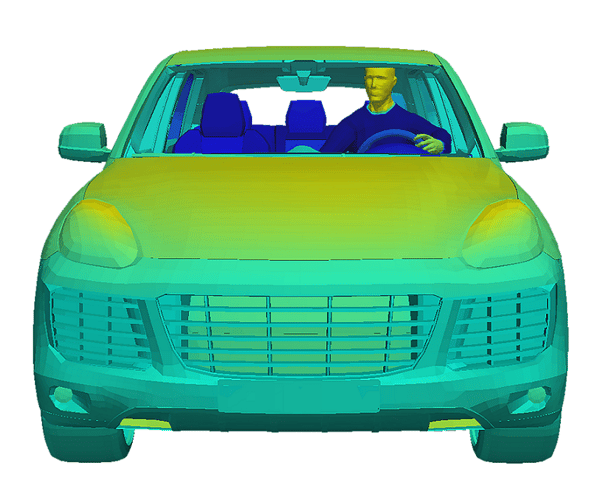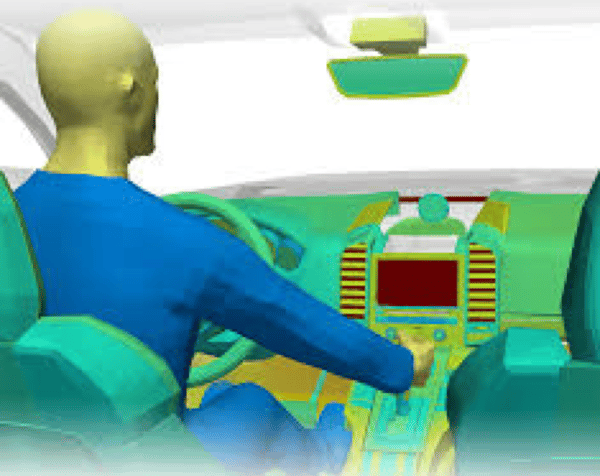"How does it feel?" the car salesman asks as he leans over the open driver's side door. The prospective buyer returns a few good comments as well as some concerns. The salesman then offers some consoling details about how the different features of the car will perform and ease the user's life.
This exchange is something that automotive companies are clueing in on as they seek coveted awards such as J.D. Power. Awards like these demonstrate the consumer's voice and are often used by prospective buyers in purchasing decisions. Recognizing the customer's needs, wishes, and expectations can mean more dollars for the company.
Rise of User-Centered Design
For many years the automotive industry has been a leader in technology-driven innovation. Each year the industry finds new ways to incorporate technology to support faster, lighter, more efficient, and smarter vehicles. But with changing economic and market conditions, OEMs and manufacturers must question their traditional, technology-driven approach to engineering. Companies are beginning to take a more "Silicon Valley" approach, beginning the journey toward what some call "user-centered" engineering as they seek customer favor and buy-in.

This user-centric approach takes customer inspiration, considers market and technological constraints, and then seeks to build a solution that benefits the user at every interaction. This type of method focuses on asking the right questions and generating ideas in human terms. When done well, this approach fuels the creation of products that resonate with customers and that will ultimately drive engagement and growth.
Cabin Environments as Leading Differentiator
Since the cabin of the car is where the user spends most of their time, improving the cabin experience can be an area where OEM's distinguish themselves. In light of this, human thermal sensation and comfort have become increasingly hot topics. Your customer's comfort is integral to their impression and overall satisfaction with the vehicle.

The cabin environment is unique, and many factors contribute to the user's comfort level (or discomfort). Whether the user is warm from solar loading from a glass roof or they seek comfort from their heated steering wheel on a cold winter morning, human thermal sensation and comfort are in designing the elements of the cabin.
Human thermal sensation and comfort simulation provide data that tells you under what conditions the occupant would be comfortable or uncomfortable. Understanding when they are uncomfortable is important because that’s when you need to make changes. As they say, “no news is good news”–the same holds true when modeling human thermal comfort. People don’t take notice when they are thermally comfortable, but they do notice when they are uncomfortable.
Design with Data, not Assumptions
Most importantly, simulating for comfort puts your work into the right frame of designing for the customer. Most companies design using assumptions (i.e., meeting a target air temperature), but when using thermal comfort as your guideline, you are actually designing with the customer in mind.
The trouble with designing with assumptions is that, more often than not, you will be leaving out important information. If your goal is to get the air temperature to be 68 degrees F, will the occupant truly be comfortable if considerable solar loading is coming through a glass roof?

Using assumptions also leaves out the human element. Not only does the occupant react to their environment, but they contribute to it. Have you ever gone skiing on a bluebird day only to get back in your car and have the windshield fog up immediately from all your hot breath? That's because you're contributing moisture and humidity to your environment. By modeling a human within your cabin environment, you can predict these scenarios and find solutions that exceed your customer's expectations.
Thermal Sensation & Comfort is not just for Research.
While human thermal sensation and comfort are relatively new, solving for temperatures isn’t. From temperature, we can know sensation; from sensation, we can understand comfort. When the simulation returns data that indicates the occupant is uncomfortable in a given environment, you can then walk back through the process to know why (the sensation was too hot) and what temperature was modeled (68 degrees F).

Based on this data, you can know what type of heat transfer was at work and then use that information to formulate a new design decision. This type of analysis allows engineers to think of the customer while still having data to make actionable design decisions. Using simulation, the engineer can also create any number of reproducible scenarios to ensure the design in various environments.
Can You Justify the Change
While incorporating human thermal simulation into your design process is sure to rock the boat, can you afford to stay where you are? With the industry changing, those who lead the charge are more likely to discover the best ways to combine their heritage of technology-driven insight with a consumer-minded design. These companies will rise to the top as market, and economic conditions continue to alter how your customers make purchases.
If you know you need to start looking for ways to innovate, start with our basic recipe for success:
- Benchmark your current process
- Use past data to understand your current design's perceived thermal sensation and comfort.
- Compare the model to a reproducible measurement (ex: thermal manikins)
- See how closely simulation and test data compare
- Use simulation to understand how design changes affect occupant comfort
This type of process allows you to see just how close the simulation will get to the test data and allow you to make directional design decisions based on your findings.
Take small steps to incorporate a process that focuses on “user-centered” design. Learn how to continue to delight customers while meeting the ever-tightening restrictions for new technologies. Simulation can help you visualize how to do more with less – to create the most efficient yet highly-rated cabin for your customers.
If you want to learn more about using TAITherm to incorporate human thermal simulation into your design process, please feel free to request a live demo of our software.
Visit our website at suppport.thermoanalytics.com for
- FAQs
- Webinars
- Tutorials
Get help from our technical support team:

